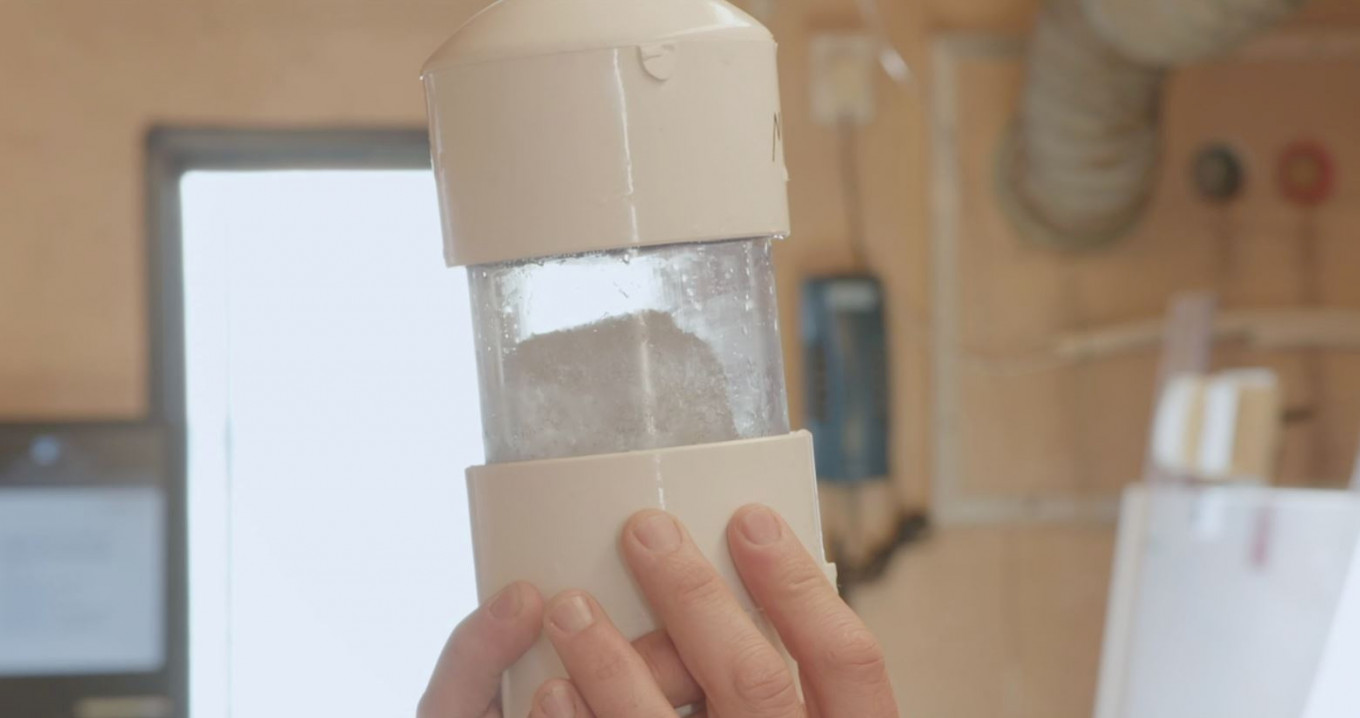Popular Reads
Top Results
Can't find what you're looking for?
View all search resultsPopular Reads
Top Results
Can't find what you're looking for?
View all search results'Punch in the gut' as scientists find micro plastic in Arctic ice
Change text size
Gift Premium Articles
to Anyone
 A sample taken from an ice core is inspected by a scientist from the US-led Northwest Passage Project during an 18-day icebreaker expedition that took place in July and August 2019, in a still image taken from a handout video obtained by REUTERS on August 14, 2019. (Northwest Passage Project/via REUTERS /Duncan Clark )
A sample taken from an ice core is inspected by a scientist from the US-led Northwest Passage Project during an 18-day icebreaker expedition that took place in July and August 2019, in a still image taken from a handout video obtained by REUTERS on August 14, 2019. (Northwest Passage Project/via REUTERS /Duncan Clark )
T
iny pieces of plastic have been found in ice cores drilled in the Arctic by a US-led team of scientists, underscoring the threat the growing form of pollution now poses to marine life in even the remotest waters on the planet.
The researchers used a helicopter to land on ice floes and retrieve the samples during an 18-day icebreaker expedition through the Northwest Passage, the hazardous route linking the Pacific and Atlantic Oceans.
"We had spent weeks looking out at what looks so much like pristine white sea ice floating out on the ocean," said Jacob Strock, a graduate student researcher at the University of Rhode Island, who conducted an initial onboard analysis of the cores.
"When we look at it up close and we see that it’s all very, very visibly contaminated when you look at it with the right tools -- it felt a little bit like a punch in the gut,” Strock told Reuters by telephone.
Strock and his colleagues found the material trapped in ice taken from Lancaster Sound, an isolated stretch of water in the Canadian Arctic, which they had assumed might be relatively sheltered from drifting plastic pollution
The team drew 18 ice cores of up to two meters in length from four locations, and saw visible plastic beads and filaments of various shapes and sizes. The scientists said the findings reinforce the observation that micro plastic pollution appears to concentrate in ice relative to seawater.
"The plastic just jumped out in both its abundance and its scale," said Brice Loose, an oceanographer at the University of Rhode Island and chief scientist of the expedition, known as the Northwest Passage Project.
Read also: Russia's Arctic plans add to polar bears' climate woes
The scientists' dismay is reminiscent of the consternation felt by explorers who found plastic waste in the Pacific Ocean's Marianas Trench, the deepest place on Earth, during submarine dives earlier this year.
The Northwest Passage Project is primarily focused on investigating the impact of manmade climate change on the Arctic, whose role as the planet's cooling system is being compromised by the rapid vanishing of summer sea ice.
But the plastic fragments -- known as micro plastic -- also served to highlight how the waste problem has reached epidemic proportions. The United Nations estimates that 100 million tonnes of plastic have been dumped in the oceans to date.
The researchers said the ice they sampled appeared to be at least a year old and had probably drifted into Lancaster Sound from more central regions of the Arctic.
The team plans to subject the plastic they retrieved to further analysis to support a broader research effort to understand the damage plastic is doing to fish, seabirds and large ocean mammals such as whales.
Funded by the National Science Foundation and the Heising-Simons Foundation in the United States, the expedition in the Swedish icebreaker The Oden ran from July 18 to Aug. 4 and covered some 2,000 nautical miles.










